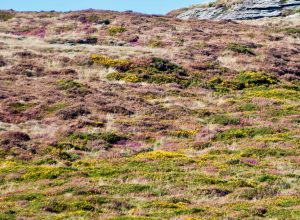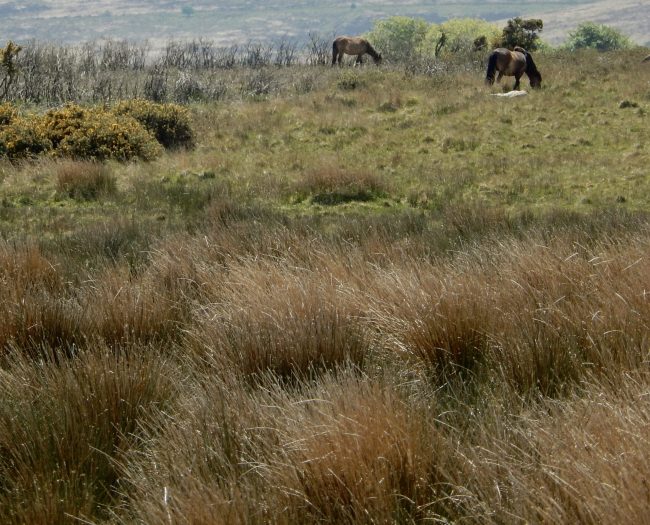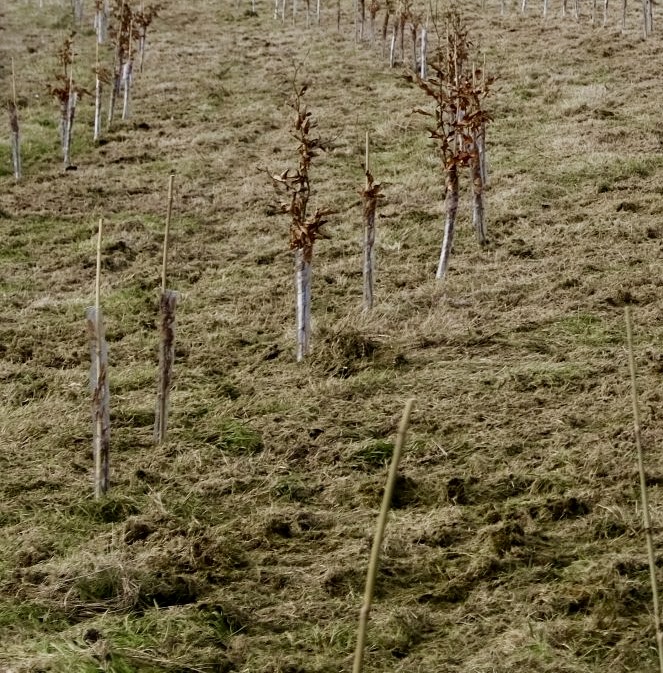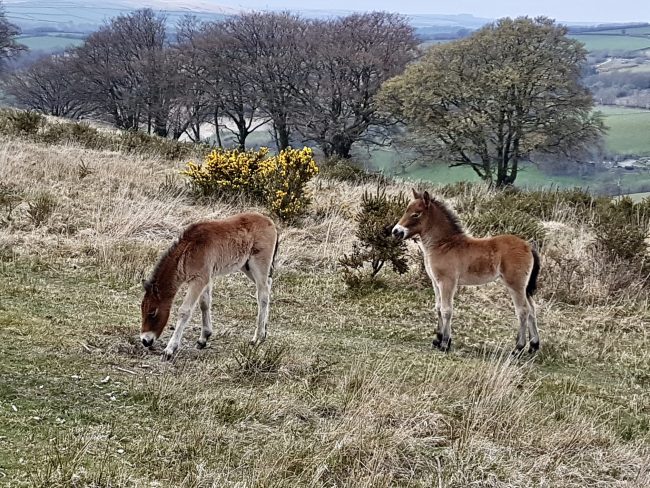The lost trees of Dartmoor

Certain upland areas of the UK , such as Dartmoor, have experienced long term grazing. This has lead to soil compaction, which in turn means that water run-off is greater. Instead of percolating into the soil, rain water runs over the surface and into rivers. This can lead to flooding during extreme weather events.
Dartmoor (National Park) is a large upland area, which historically was dominated by oak woodland. Oak woodland now covers a very small area. The region is now dominated by blanket bog, heathland and acid grassland. The number of grazing animals (sheep, cattle and ponies - deer) increased significantly between the 1950s and 2000, resulting in soil compaction.
Researchers at the University of Plymouth have investigated areas of upland pasture on Dartmoor, and the potential for the establishment of native oak saplings. Working with test sites, they were able to show that significant improvements in soil properties could be observed with 15 years of sapling establishment. The most effective location (in terms of flood prevention) for sapling / tree planting was on steep hillside on the edge of upland areas.
Their initial work on the planting of woodland has since been expanded to determine the factors that affect the establishment of the tree (oak) saplings. Their most recent paper notes that the presence of livestock meant that fewer oak saplings survived and those that did were smaller. However, the effects of cattle and ponies was not always negative in that their trampling could reduce the growth of bracken - allowing more light to reach young tree saplings.

A southern upload moorland - Exmoor
The research team formulated a number of recommendations relating to the creation / establishment of woodlands in such upland pastures.
- Livestock should be excluded in areas where there are seedlings and young saplings (1 - 3 years). This exclusion should last for some 12 years.
- Larger oak (4 - 7 yrs) saplings can be planted into areas of dense vegetation, as this protects the saplings from livestock.
- Livestock could be allowed to graze in the vicinity of mature oak trees as this would reduce dense, competitive vegetation, allowing seedlings to grow / develop.
- Strategic planting and management should be considered / encouraged for upland slopes where drainage is poor - to allow for soil recovery and development of ecosystem services (flood mitigation).

Whilst natural tree colonisation is a low-cost and environmentally sensitive mechanism to promote woodland expansion (working towards government targets on climate mitigation, carbon sequestration etc.), it is likely that the expansion of oak woodland into upland pasture systems will require strategic planting and informed livestock management.

Exmoor Ponies.
Full details of their paper can be found here : https://besjournals.onlinelibrary.wiley.com/doi/10.1002/2688-8319.12126
(Thanks to Art for images of exmoor and ponies).
Comments are closed for this post.
Discussion
We’re areas like Dartmoor, Exmoor and Bodmin moor ever fully forested and devastated by the Middle Bronze Age deforestation or is it myth.
Complex issue, which tends to elicit polarised views (like so many things nowadays).
https://www.forestresearch.gov.uk/publications/managing-deer-in-the-countryside/
Local comment here
https://dartmoorlinks.co.uk/lifestyle/naturalist/oh-deer/
What effect are the increasing numbers of deer going to have on any potential woodland planting on Dartmoor, in the event of other livestock being excluded?

These links might interest
https://www.dartmoor.gov.uk/wildlife-and-heritage/heritage/prehistory
https://www.rewildingbritain.org.uk/blog/rewilding-the-uplands-what-the-history-of-dartmoor-can-tell-us
https://www.semanticscholar.org/paper/The-development-of-high-moorland-on-Dartmoor%3A-fire-Caseldine-Hatton/f2df2b58b9b6d661e94369a793f4ccc1496b48a3
Blogs
3 December, 2022